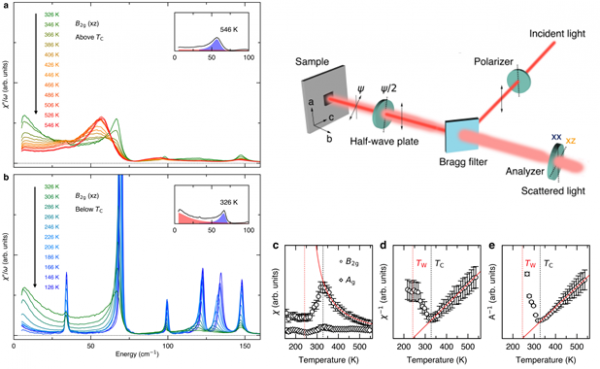[Professor B. J. Kim] Direct observation of excitonic instability in …
- No attach File
관련링크
main text
Caption: Static electronic susceptibility of Ta2NiSe5 extracted Raman spectra. a,b, Quasielastic scattering intensity increases near the transition temperature (TC=325 K) and c,d,e, static electronic susceptibility follows Curie-Weiss behavior.
[Professor B. J. Kim] Direct observation of excitonic instability in Ta2NiSe5
Coulomb attraction between electrons and holes in a narrow-gap semiconductor or a semimetal is predicted to lead to an elusive phase of matter dubbed `excitonic insulator'. However, direct observation of such electronic instability remains extremely rare. Here, we report the observation of incipient divergence in the static excitonic susceptibility of the candidate material Ta2NiSe5 using Raman spectroscopy. Critical fluctuations of the excitonic order parameter give rise to quasi-elastic scattering of B2g symmetry, whose intensity grows inversely with temperature toward the Weiss temperature of Tw ~237 K, which is arrested by a structural phase transition driven by an acoustic phonon of the same symmetry at Tc =325 K. Concurrently, a B2g optical phonon becomes heavily damped to the extent that its trace is almost invisible around TC, which manifests a strong electron-phonon coupling that has obscured the identification of the low-temperature phase as an excitonic insulator for more than a decade. Our result unambiguously reveals the electronic origin of the phase transition.



-2.gif)









 Login
Login


